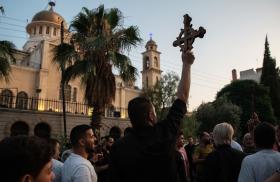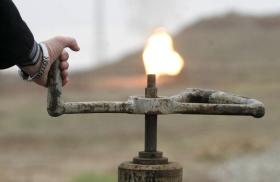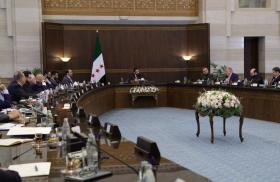
- Policy Analysis
- PolicyWatch 4048
An “Enrichment Consortium” Is No Panacea for the Iran Nuclear Dilemma

The United States should recognize consortia concepts for what they are: face-saving steps rather than cure-alls for the nonproliferation problems created by Iran’s nuclear activities.
On May 31, U.S. negotiators reportedly presented Iran with a proposal for a regional “uranium enrichment consortium,” which authorities in Tehran have said they will seek more clarity on before the sixth round of nuclear negotiations scheduled for this weekend. It is no surprise that this idea is being contemplated now. Whenever talks begin to stall over Iran’s enrichment program, eyes tend to drift to consortium concepts as a way out of the impasse, based on the notion that adding an international dimension to the Iranian nuclear program will give everyone a bit of what they want. Yet such concepts have generally failed to get traction to date, and although a mutually satisfactory consortium may yet be structured as part of the current talks, the obstacles are legion.
Previous Consortium Efforts
Given the high costs and implicit proliferation risks of building nuclear infrastructure, countries have long explored consortia as a smart path. Perhaps the most effective long-term consortium is Urenco, a company created by Germany, the Netherlands, and the United Kingdom in 1971. It has many operating uranium enrichment plants, including in the United States, and supplies a variety of consumers.
Iran was once a member of a similar consortium created around the same time: Eurodif, whose original partners were Belgium, France, Italy, Spain, and Sweden. In 1974, Sweden sold its 10 percent share to Iran, which then lent Eurodif $1 billion (and another $180 million after that) in return for a contract to receive enriched uranium (see below for more on this troubled arrangement). Later, facing financial troubles, Eurodif evolved into Orano, with France assuming 90.3 percent ownership and separate 4.8 percent stakes granted to Japan Nuclear Fuel Limited and Mitsubishi Heavy Industries.
In 2010, amid growing complaints from Iran and other countries about the lack of steady access to enriched uranium from foreign suppliers, the Nuclear Threat Initiative and American investor Warren Buffett contributed $50 million to establish an international consortium and provide a guaranteed stockpile of fuel for power reactors. In 2015, the International Atomic Energy Agency (IAEA) and Kazakhstan agreed to set up this fuel bank, which became operational in 2021.
Problems with Existing Consortia Models
The many consortium ideas that have been proposed to deal with the Iran enrichment quandary can be grouped into three general categories:
Financial stake for services rendered. In this model, participants pay for a stake in a company, receive enriched uranium in return, but do not participate in all aspects of production. This means Iran would not be authorized to house enrichment facilities and/or other parts of the fuel cycle in its territory. It could also be excluded from the technological aspects of the program.
Split technical participation. In this model, consortium partners identify parts of the fuel production process to be done by each member and share the resulting product. For example, one member mines the uranium, another converts it into enrichable form, another produces the fuel, and yet another handles waste maintenance. Alternatively, certain members could handle more than one of these steps. In the current case, Iran would probably not be expected to mine uranium given its limited reserves of natural ore. Yet it could import ore from elsewhere and convert it to enrichable form (e.g., uranium hexafluoride gas), then transfer the material abroad for further processing.
Black-box operations. In this model, a country could house an enrichment facility but not be involved in the technological aspects of its work. Such a facility could be under foreign control and operation, as seen with Urenco’s plant in the United States, where Americans have no access to the technology used therein.
Setting aside the legal issues that a company like Urenco might raise about others using its technology, both the Eurodif and Urenco cases show some of the complications and risks of following any of these consortium models. After all, it was from Urenco that A. Q. Khan—the father of the Pakistani nuclear bomb—stole the centrifuge designs that he subsequently provided to Iran and Libya, among others. Technology sharing is often a natural element of nuclear consortia, but it can also become a pernicious proliferation threat depending on the security arrangements and partners involved.
Although Eurodif did not create such proliferation risks, it is viewed as a cautionary tale of another sort. Despite investing over $1 billion, Iran never received its 10 percent share of low-enriched uranium (LEU) produced by the consortium. Lengthy court battles ensued, and France eventually agreed to repay Iran. Notably, this decision came one week after longtime Eurodif director Georges Besse was assassinated in November 1986 by terrorists who acknowledged they were acting at Iran’s behest. In the end, France did not actually pay Tehran until 1991.
To this day, Iranian officials allege that Eurodif withheld their uranium due to U.S. political pressure on France. They also claim they can never again rely exclusively on foreign fuel suppliers given that experience. Iran has signed contracts with the Russian firm Rosatom to provide LEU fuel for the power reactors at its Bushehr plant (one of which is operational, another is under construction, and a third is in advanced planning). Yet regime officials argue that their domestic enrichment program is a necessary backup for this Russian supply. They also seemingly hope to preserve the nuclear weapons option that a domestic enrichment program provides. As such, they are highly resistant to signing any deal that would reduce Iran’s role in the fuel cycle or make it a mere financier of enrichment abroad.
In contrast, the United States has previously refused to accept consortium concepts that involve large-scale enrichment inside Iran. Of course, the 2015 nuclear deal would have permitted Tehran to retain and expand its enrichment program after fifteen years, but only following a period of significant constraints.
These and other factors have left the two countries unable to find a viable consortium concept over the decades. Alternative concepts—like a Kazakh fuel supply bank under IAEA supervision—have likewise failed to convince Iran to turn off its centrifuges.
More broadly, there is no clear need for a new nuclear fuel consortium in the Middle East at present. Existing nuclear energy programs in the region are either too undeveloped to require more fuel or well covered by existing supply arrangements. Far from addressing a real shortage, a consortium would likely create more proliferation concerns.
Policy Recommendations
The United States can certainly continue exploring fuel consortia ideas with Iran toward the goal of finding a more comprehensive solution to the current deadlock. Yet it should do so with very clear red lines about what would constitute an acceptable nuclear deal.
For example, with or without a consortium, Washington should insist that Tehran be barred from receiving advanced centrifuge technology or other foreign technical support for its nuclear fuel program. Although the program has advanced significantly through Iran’s own efforts, any transferred know-how that helps the regime perfect the fuel cycle should be forbidden.
Moreover, the United States should make clear that it is the presence of these capabilities inside Iran that poses the threat, whether Iranian personnel and entities are involved in operating them or not. For example, Iranian commentators often mention converting the Natanz or Fordow site into an internationally operated fuel enrichment plant. Yet even if Tehran agreed to that idea, it would not change the fact that having any type of enrichment plant inside Iran creates a potential path to nuclear weapons. Using foreign workers and monitors would not change this reality. Even insisting on U.S. inspectors would not be a panacea, since they could conceivably be taken hostage and used as human shields if Tehran ever decides to head for a nuclear weapons breakout. Calling the arrangement a “nuclear power” consortium will not stop Iran from diverting capabilities to military use.
In the end, the Trump administration may be prepared to accept a certain number of centrifuges in Iran as the price to be paid for reaching a deal, similar to the Obama administration’s calculus in 2015. If so, assessments of the number and quality of those centrifuges and associated nuclear equipment should be based on the assumption that Iran could later seize and use them as part of a breakout effort—regardless of whatever financial, political, or legal restrictions are placed on them, and regardless of who is initially placed in control of them. The same goes for any potential agreements on stockpiling nuclear material for deployment abroad. The risk evaluation process for such equipment and material should not be affected at all by consortium arrangements.
The same principles should apply to all transparency and monitoring measures designed and implemented by the IAEA to ensure that nuclear material and equipment are not diverted during the life of a deal. For instance, the 2015 deal included specific provisions related to monitoring centrifuge components and uranium in addition to the standard IAEA safeguards. The existence of a consortium arrangement should not be taken as license to set aside the sophisticated, rigorous work of IAEA inspectors, whose role will remain essential to any new agreement. In short, the United States should recognize consortia concepts for what they are: face-saving steps rather than cure-alls for the nonproliferation problems created by Iran’s nuclear activities.
Richard Nephew is the Bernstein Adjunct Fellow at The Washington Institute and former deputy special envoy for Iran at the State Department. Patrick Clawson is the Institute’s Morningstar Senior Fellow and director of its Viterbi Program on Iran and U.S. Policy.




